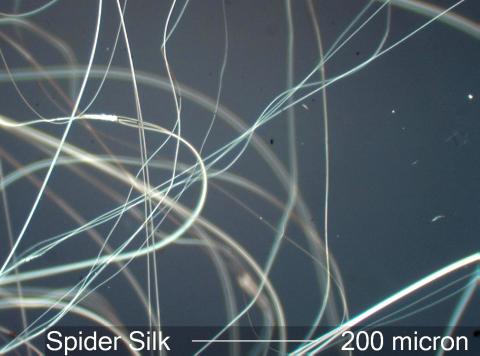This image depicts the silk strands of a spider, at high-powered magnification. Russ Crutcher, of Microlab NW, has graciously made this image of spider silk available. Click on it for a better view.
Web-spinning spiders have glands which make silk. The silk is a protein which spiders can eat and recycle.
Each gland produces a different type of silken thread. Those threads perform different functions in the web-spinning/prey-capturing process, such as:
- Attaching threads
- Walking threads
- Sticky threads
- Adhesive threads
- Prey-encapsulating threads
- Cocoon-spinning threads
When we examine a spider's anatomy, we see it has "spinners." Those spinners (or spinnerets) are like little nozzles which shoot-out the threads made in the spider's glands. They, together with the spider's legs, are the tools needed to weave a web.
Different types of spiders spin different types of webs. Their glands and spinnerets also look different. Thanks to the California Academy of Sciences, we can examine highly magnified glands and spinnerets (the "A" picture is the overview for each) in the following spiders:
- Hypochilus pococki, North Carolina
- Filistata insidiatrix, Siena, Italy
- Megadictynathilenii, New Zealand
- Goeldia, Chile
When the silk thread first comes out of the spider's body, it is a liquid. It becomes a solid when the air mixes with it.
The spider is now ready to begin spinning a web.


 Back
Back
 Next Chapter
Next Chapter

 Back
Back
 Next Chapter
Next Chapter
